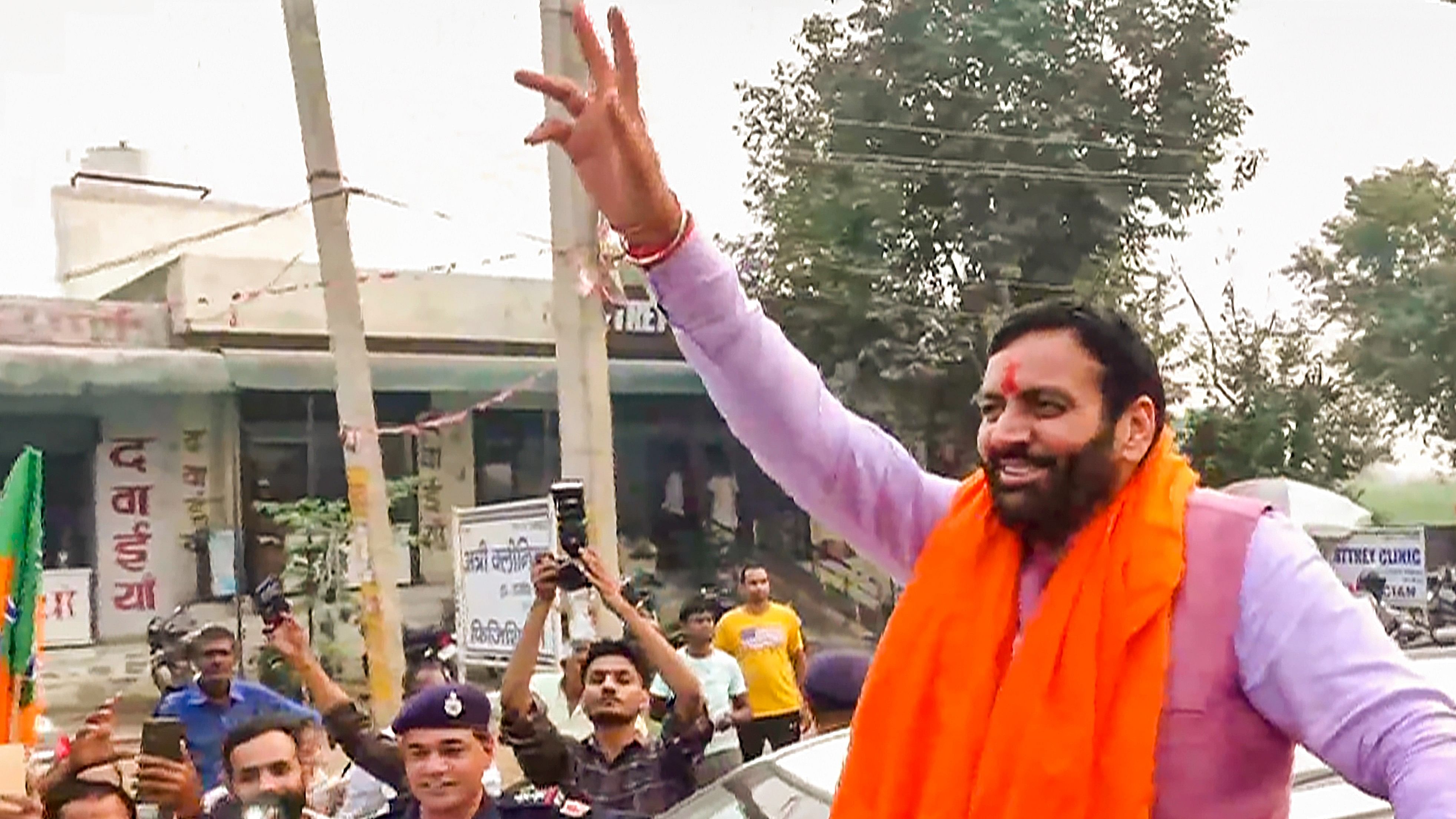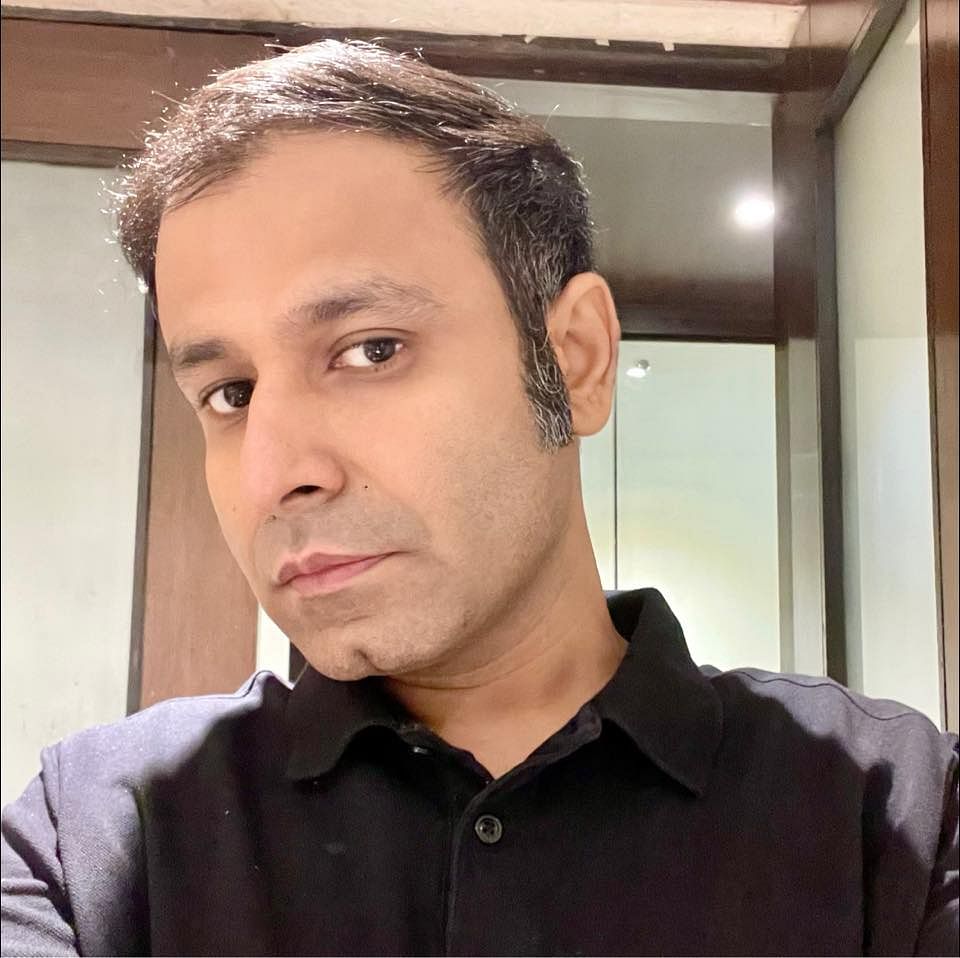
BJP candidate and Haryana Chief Minister Nayab Singh Saini celebrates with supporters after his victory from Ladwa constituency in the Haryana Assembly elections, on Tuesday.
Credit: PTI Photo
The Haryana electorate has made a 'Jalebi' of the exit polls! An election which looked like a foregone conclusion has come as a jolt for the Congress. The voters have repeated a pattern of the Madhya Pradesh, Chhattisgarh, and Lok Sabha elections, where the favourites, mostly hyped in the media narrative, have been shown their place. The Bharatiya Janata Party (BJP)’s hattrick in Haryana is a blend of some clever realpolitik and astute social engineering, which the Congress, in its conventional kind of politics, failed to read.
The BJP’s strategy to field independents to cut down its anti-incumbency and to divide the Jat and the Dalit vote of the Congress has paid off. Contrary to the analysis that assumed that the Chautala factions — the INLD and the JJP — both of whom aligned with Dalit parties, namely the BSP and the Azad Samaj Party respectively, would play spoilsport for the Congress, it is the independents who have chipped away the Congress’ votes.
The voters have rejected the dominant caste strongman politics. This is because the BJP’s experiment of counter-polarisation against the dominant caste in Haryana seemed to have clicked again. The pitch of 35 biradaris against 1 biradari (read Jats) has reaped electoral benefits. It has tried the same in many states — in Maharashtra, it has pitched other caste combinations against the dominant Marathas (traditional votes of the Congress), in Uttar Pradesh it played similar tactics to create a vote base of non-Jatav-non-Yadav by extending outreach to non-Yadav OBC and non-Jatav Dalits, in Madhya Pradesh the BJP made a Yadav the chief minister and earlier a Chouhan against the traditional Brahmin dominance and so on.
The Congress is yet to find an antidote for this phenomenon. The party’s Haryana unit, which represented a broad coalition of local satraps dominant in the various areas of the state, became virtually a one-man party in this election, and, in turn, a one-caste party.
Amidst the successful narrative weaved by the Congress during the Lok Sabha elections, about ‘BJP changing the Constitution’, some of the Dalit vote shifted towards the party. However, for two reasons the perception during the Assembly elections was different. First, the over-dependence on one leader — Bhupinder Singh Hooda, thereby the slogans such as ‘Jat, Kisan, Jawan and Pahelwan’ in his rallies, created an unease in the Dalit and other caste voters.
Second, the narrative of changing the Constitution was no longer relevant to a state campaign. The Congress struggled to transcend its dependence on a single leader and failed to adapt to Haryana’s evolving caste dynamics. To the credit of Congress president Mallikarjun Kharge and Leader of Opposition Rahul Gandhi, the party tried hard to reach out to the Scheduled Caste (SC) voters, by inducting Ashok Tanwar, but the campaign had already ended by then. It is no surprise that out of the 17 SC reserved seats, the Congress is leading only in eight seats, and out of the 30 Dalit-dominated seats, it is leading in just three seats.
Haryana has long been characterised by a fragmented political landscape, with Independents and regional party candidates emerging as significant contenders in certain areas. The BJP outmanoeuvred the Congress by fielding, and in many cases reportedly funding independents even in Jat-dominated areas. A total of 445 independents were in the fray — that’s an average of five independent candidates per seat. Thirty-six Congress rebels stood as Independents and 33 rebels from the BJP also stood for elections. The Haryana unit of Congress had expelled 13 such party leaders for ‘anti-party activities’ over their decision to contest as Independent candidates. The influence of Independent candidates in this election is evident in the significant increase in votes polled, nearly doubling from around 6% in 2019 to 11% in 2024.
By strategically fielding Jat candidates, the BJP was able to tap into the Jat vote bank and foster a degree of counter-polarisation. In the Rai Assembly seat of Sonepat (a Lok Sabha constituency won by the Congress), an Independent candidate drew 12,000 votes away from Congress candidate Jai Bhagwan Antil, paving the way for a win by BJP’s Jat candidate, Krishna Gahlawat. Similarly, in the Safidon constituency of Jind, an Independent candidate garnered over 20,000 votes — far exceeding the margin of 4,000 votes between the BJP and the Congress — resulting in the defeat of sitting Congress MLA Subhash Gangoli.
The BJP’s blend of strategic candidate selection and nuanced social engineering allowed it to effectively counteract anti-incumbency and outmanoeuvre the Congress. As Haryana moves forward, the elections serve as a reminder that political fortunes in the state are shaped by a delicate balance of caste, local alliances, and strategic manoeuvring, where no outcome is ever a foregone conclusion.
(Rachit Seth is founder of Policy Briefcase, and Aakash Mehrotra is a development consultant)
Haryana Assembly poll 2024 results| Check constituency results here
J&K Assembly poll 2024 results| Check constituency results here
Assembly Elections 2024 | In the first assembly polls since the Lok Sabha elections, Narendra Modi and the BJP face a rejuvenated and vindicated Opposition in the Haryana assembly polls. Meanwhile, Jammu and Kashmir is voting after almost a decade and it remains to be seen how the abrogation of Article 370 has impacted the political landscape of the Valley. Check live updates and track the latest coverage, live news, in-depth opinions, and analyses only on Deccan Herald.
Subscribe and follow DH on Whatsapp, X, Facebook, YouTube, and Instagram to never miss out on anything.
